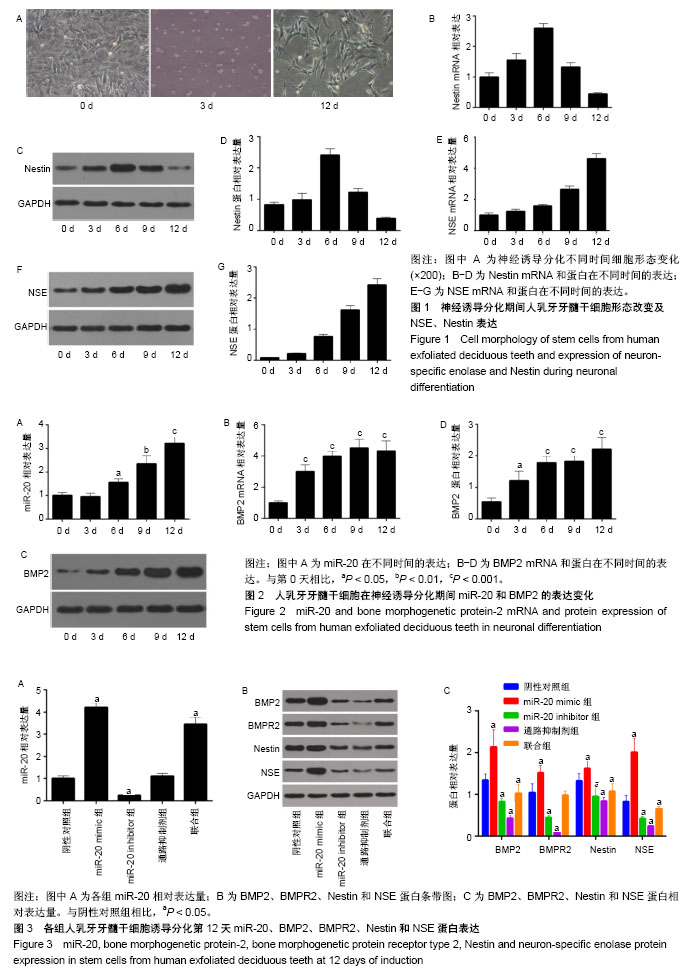| [1] Shimojima C, Takeuchi H, Jin S, et al. Conditioned Medium from the Stem Cells of Human Exfoliated Deciduous Teeth Ameliorates Experimental Autoimmune Encephalomyelitis. J Immunol. 2016; 196(10): 4164-4171.[2] 项海东,李浩渤,陈惠珍. 脂多糖调控Notch信号通路作用于人牙髓干细胞增殖、分化、凋亡的实验研究[J]. 中国免疫学杂志, 2017, 33(10): 1483-1486. [3] Miura M, Gronthos S, Zhao M, et al. SHED: stem cells from human exfoliated deciduous teeth. Proc Natl Acad Sci U S A. 2003;100(10): 5807-5812.[4] Majumdar D, Kanafi M, Bhonde R, et al. Differential Neuronal Plasticity of Dental Pulp Stem Cells From Exfoliated Deciduous and Permanent Teeth Towards Dopaminergic Neurons. J Cell Physiol. 2016;231(9):2048-2063.[5] Su WT, Wu PS, Huang TY. Osteogenic differentiation of stem cells from human exfoliated deciduous teeth on poly(ε-caprolactone) nanofibers containing strontium phosphate. Mater Sci Eng C Mater Biol Appl. 2015;46:427-434.[6] Nicola FDC, Marques MR, Odorcyk F, et al. Neuroprotector effect of stem cells from human exfoliated deciduous teeth transplanted after traumatic spinal cord injury involves inhibition of early neuronal apoptosis. Brain Res. 2017;1663:95-105.[7] 郑琼丹,邢泉,廖维立,等. Notch信号通路参与BMP-6对人牙髓细胞增殖分化作用的研究[J]. 中华老年口腔医学杂志, 2015,13(2):65-69.[8] Zhang F, Song J, Zhang H, et al. Wnt and BMP Signaling Crosstalk in Regulating Dental Stem Cells: Implications in Dental Tissue Engineering. Genes Dis. 2016;3(4):263-276.[9] Hegarty SV, Sullivan AM, O'Keeffe GW. BMP2 and GDF5 induce neuronal differentiation through a Smad dependant pathway in a model of human midbrain dopaminergic neurons. Mol Cell Neurosci. 2013;56: 263-271. [10] 白广超,金宏亮,雷堃,等. BMP-7诱导大鼠骨髓间充质干细胞向神经元细胞分化的初步研究[J].安徽医科大学学报, 2018,53(2):190-195.[11] 赵红斌,甄英丽,田蓉,等. Notch和BMP信号通路介导红景天苷促进小鼠骨髓间充质干细胞向神经元细胞定向分化研究[J]. 中草药, 2016, 47(13):2294-2300.[12] Sun DG, Xin BC, Wu D, et al. miR-140-5p-mediated regulation of the proliferation and differentiation of human dental pulp stem cells occurs through the lipopolysaccharide/toll-like receptor 4 signaling pathway. Eur J Oral Sci. 2017;125(6):419-425.[13] Zhang JF, Fu WM, He ML, et al. MiRNA-20a promotes osteogenic differentiation of human mesenchymal stem cells by co-regulating BMP signaling. RNA Biol. 2011;8(5):829-838.[14] 杨倩娟,刘文佳,常文悦,等. miR-20a对人炎症牙周膜干细胞成骨分化能力的影响[J]. 实用口腔医学杂志, 2016, 32(2):186-189.[15] 杨鑫,李思洁,赵玮. Wnt信号通路在调控牙髓干细胞多向分化及炎症损伤修复中的作用[J]. 国际口腔医学杂志, 2018, 45(3):286-290.[16] 马子洋,郭晓霞. 牙髓干细胞在再生医学中的应用研究与进展[J]. 中国组织工程研究, 2016, 20(19):2872-2878.[17] Bagher Z, Azami M, Ebrahimi-Barough S, et al. Differentiation of Wharton's Jelly-Derived Mesenchymal Stem Cells into Motor Neuron-Like Cells on Three-Dimensional Collagen-Grafted Nanofibers. Mol Neurobiol. 2016;53(4):2397-2408.[18] Song M, Jue SS, Cho YA, et al. Comparison of the effects of human dental pulp stem cells and human bone marrow-derived mesenchymal stem cells on ischemic human astrocytes in vitro. J Neurosci Res. 2015; 93(6):973-983.[19] 张凤兰,杨璐军,胡炜彦,等.人参皂苷Rg3对体外培养小鼠神经干细胞分化的影响[J]. 中国组织工程研究, 2018, 22(13):2098-2103.[20] 康湘萍,陈超,梁超,等.大鼠骨髓间充质干细胞培养、鉴定及神经样细胞分化[J]. 中国老年学杂志, 2018, 38(1):10-14.[21] Martin EC, Qureshi AT, Dasa V, et al. MicroRNA regulation of stem cell differentiation and diseases of the bone and adipose tissue: Perspectives on miRNA biogenesis and cellular transcriptome. Biochimie. 2016;124: 98-111.[22] 张浩,康焱,马元琛,等.脂肪源性干细胞成骨分化过程中成骨相关miRNA的表达模式[J]. 中国组织工程研究, 2011,15(23):4247-4250.[23] Chen JF, Yang YM, Dong XX, et al. MicroRNA-20a Promotes Osteogenic Differentiation of C3H/10T1/2 Cells through Regulating CKIP-1 Expression. Zhongguo Shi Yan Xue Ye Xue Za Zhi. 2017; 25(1):214-220.[24] Kunimatsu R, Nakajima K, Awada T, et al. Comparative characterization of stem cells from human exfoliated deciduous teeth, dental pulp, and bone marrow-derived mesenchymal stem cells. Biochem Biophys Res Commun. 2018;501(1):193-198.[25] Jovanovic VM, Salti A, Tilleman H, et al. BMP/SMAD Pathway Promotes Neurogenesis of Midbrain Dopaminergic Neurons In Vivo and in Human Induced Pluripotent and Neural Stem Cells. J Neurosci. 2018;38(7): 1662-1676.[26] Jin J, Tilve S, Huang Z, et al.Effect of chondroitin sulfate proteoglycans on neuronal cell adhesion, spreading and neurite growth in culture.Neural Regen Res. 2018;13(2):289-297. [27] Xu L, Long J, Shi C, et al. Effect of leukocyte inhibitory factor on neuron differentiation from human induced pluripotent stem cell-derived neural precursor cells. Int J Mol Med. 2018;41(4): 2037-2049. |
.jpg)


.jpg)
.jpg)
.jpg)